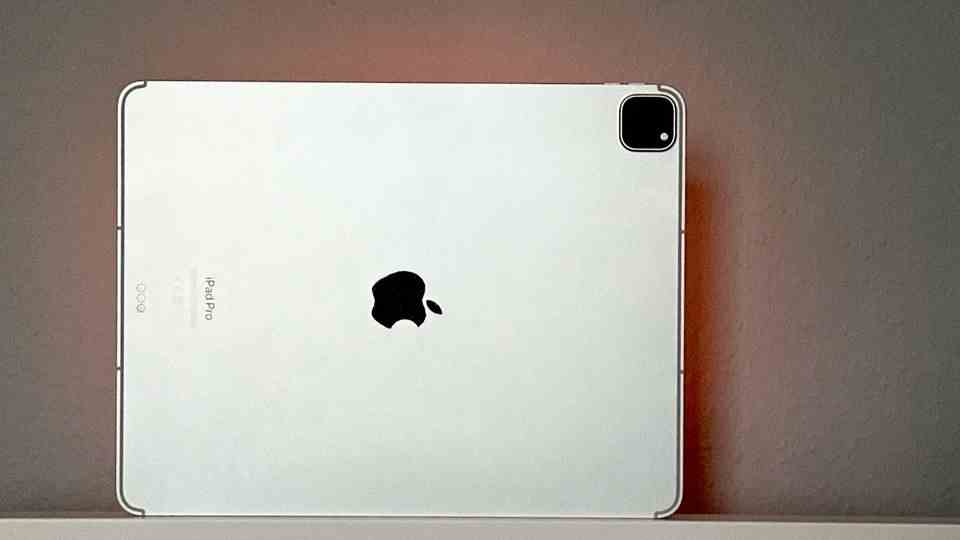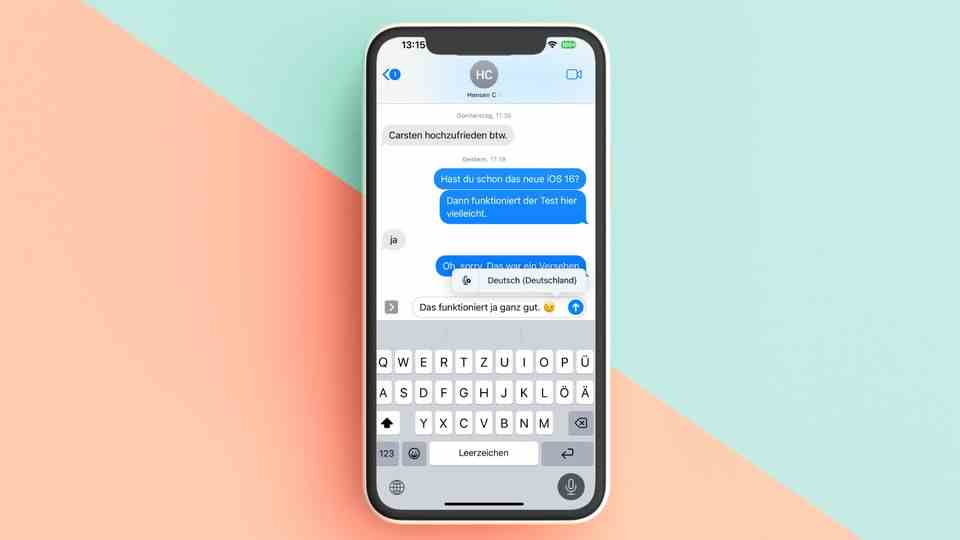The iPad Pro is Apple’s top tablet. And with the latest model, it gets even more power. The purchase should be worthwhile for very few, but really for them.
When Apple introduced its first iPad Pro, that was a promise. With the pen operation, which was unusual for Apple at the time, and the huge 12.9-inch display, the group wanted to replace the laptop for many customers. The fact that last spring an iPad was given a notebook processor for the first time and thus also caught up in terms of performance was a further step in this direction. The new iPad Pro (2022) is almost too similar to a notebook, as the test shows.
Because while more and more exciting innovations have come in recent years with a new design including a revised pen, the powerful Pro-Motion display and finally with the M1 chip, that brings new iPad Pro one thing in particular: it is fitted with Apple’s current M2 chip. And thus almost 15 powers faster than its predecessor. That’s pretty much it.
Faster than any other tablet
This is not to downplay the added value of the new chip: the new iPad is simply incredibly fast. In performance tests, so-called benchmark programs, it almost achieves the values of the current Apple notebooks Macbook Air (tested here by us) or Macbook Pro (also tested by us). That was simply unthinkable less than two years ago. Compared to its direct predecessor from last spring, the new iPad Pro offers 15 to 20 percent more performance, depending on use. That’s really something to behold.
However, it does not change the fact that this type of update – pure product maintenance, in which only one chip becomes faster – has so far mainly been known from the notebook sector. With the iPad, however, the number of buyers who can really exhaust the performance limits of the device is likely to be significantly smaller.

Thanks to the completely unchanged design of the new iPad Pro, the Magic Keyboard and the Apple Pencil of the second generation continue to work as usual
Because with classic everyday tasks such as e-mail, surfing, videos and even gaming, iPad Pros have not been able to work to capacity for years. The full power of the tablets is actually only necessary when they are required by professional users for video editing, music production or graphics-intensive work. These highly demanding users will gratefully take advantage of the extra performance.
bet on the future
For everyone else, the additional performance is primarily of interest if they are looking for a device that is as future-proof as possible. The M2 also promises to have enough power when the resource hunger of everyday apps increases. Or Apple starts tearing down the boundaries between the iPad and its Mac computer even further. A process that the group has just pushed ahead with an update (find out more here).
A feature of the Apple Pencil (second generation) that should be understood more as a side effect of the M2 has yet to develop its usefulness over time: if you bring the pencil close to the new iPad Pro, the pen will already select the first elements before you touches the screen. This also works with existing pens, a new purchase is not necessary. However, the so-called “floating function” has so far hardly served any noticeable purpose. “Hovering” could offer many conceivable functions, such as a preview of videos or an enlargement of the marked object. Something like that isn’t even found in Apple’s own apps. As a result, the pre-marking in everyday life has so far primarily been irritating.
Whether the feature already known from Samsung’s S-Pen will actually be useful in the future remains to be seen. But you shouldn’t expect too much, after all, the apps have to work even if you don’t have an Apple Pencil. After a few years, Apple gave up on a similar function, known as “3D Touch”, which was called “3D Touch”.

The iPad Pro’s camera continues to rely on LiDAR to measure the distance to the subject
© Malte Mansholt / star
(Almost) everything known
Otherwise, almost nothing has changed on the iPad Pro. The design is the same as the last model, like one egg in the other. The display is still fantastic, but offers exactly the same presentation with a resolution of 2732 x 2048 (on the 12.9-inch model), a maximum brightness of 1600 nits (on HDR content) and a flexible refresh rate of up to 120 Hertz like the predecessor.
Nothing has changed on the hardware side of the cameras either. Unlike the new entry-level iPad (you can find our test here), the front camera is still in the side edge and reliably recognizes the user via FaceID. The rear camera has a resolution of 12 megapixels (main camera) or 10 MP (ultra wide angle) and also offers the LiDAR depth sensor. Only the improved recalculation of the images with Smart HDR 4 is new.
When it comes to connectivity, there is a small innovation: The iPad Pro supports the modern WLAN standard Wifi 6E, which supports even more frequency ranges and a higher speed if it logs into networks with the appropriate equipment. However, they are still quite rare. The mobile version also supports 5G.
Swallow at the price
Like all of Apple’s recent devices, the iPad Pro has increased in price significantly. The 11-inch model starts at 1049 euros for the 128 GB version without mobile communications, the 12.9-inch model is only available from 1449 euros. If you need more memory or your own Internet connection – neither of which can be retrofitted – it quickly becomes significantly more expensive. Finally, the top model with 2 TB of storage and 5G costs 3024 euros. An iPad has never been so expensive.
Conclusion: Almost nobody needs the best iPad
With the new iPad Pro Apple has presented an update that was previously only known from its notebooks: It’s faster, so it can do a few new tricks – and is otherwise exactly the same as its predecessor. That’s nothing bad. The new iPad Pro is without a doubt the best tablet out there. Only: only very few potential customers will actually be able to use the advantages. Together with the significant price increase, this makes a purchase recommendation extremely difficult.
For most buyers, the iPad Pro (2021) will therefore remain the more attractive offer, it is available from 824 euros and offers almost the same overall package except for the new chip. The iPad Air with M1 chip (you can find our test here) is also an extremely good alternative for most usage scenarios with a price starting at 630 euros.
This article contains so-called affiliate links. There is more information here.


